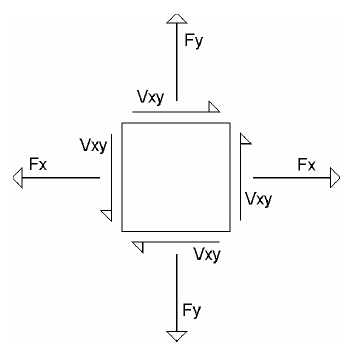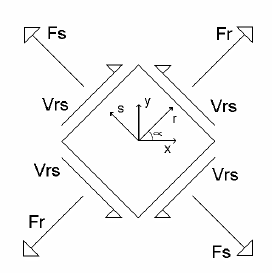In-plane behavior
In-plane forces can be quantified as an axial stress in two perpendicular directions, along with a shear stress.
For a differential element (with no loads applied) the stresses are shown as follows:
From equilibrium considerations, the variation of the in-plane forces can be shown to be:
δFx/δx + δVxy/δy = -Px
δFy/δy + δVxy/δx = -Py
where Px and Py are applied loads.
If a different set of coordinate axes is used for references, the forces in terms of these new axes have a Mohr’s circle relationship to the forces in terms of the original axes:
Fr = Fx cos2 α + Fy sin2 α + 2Fxy sin α cos α
Fs = Fx sin2 α + Fy cos2 α – 2Fxy sin α cos α
Vrs = Vxy (cos2 α –sin2 α) + (Fy – Fx) sin α cos α
This Mohr’s circle relationship is based on equilibrium considerations, so it is valid for all materials.
For every point in the slab there will be a set of two perpendicular "principal axes" where the shearing stresses are zero and the forces in the two perpendicular directions are at their maximum and minimum values. The angle between the principal axes and the x- and y-axes will vary from point to point in the slab.



